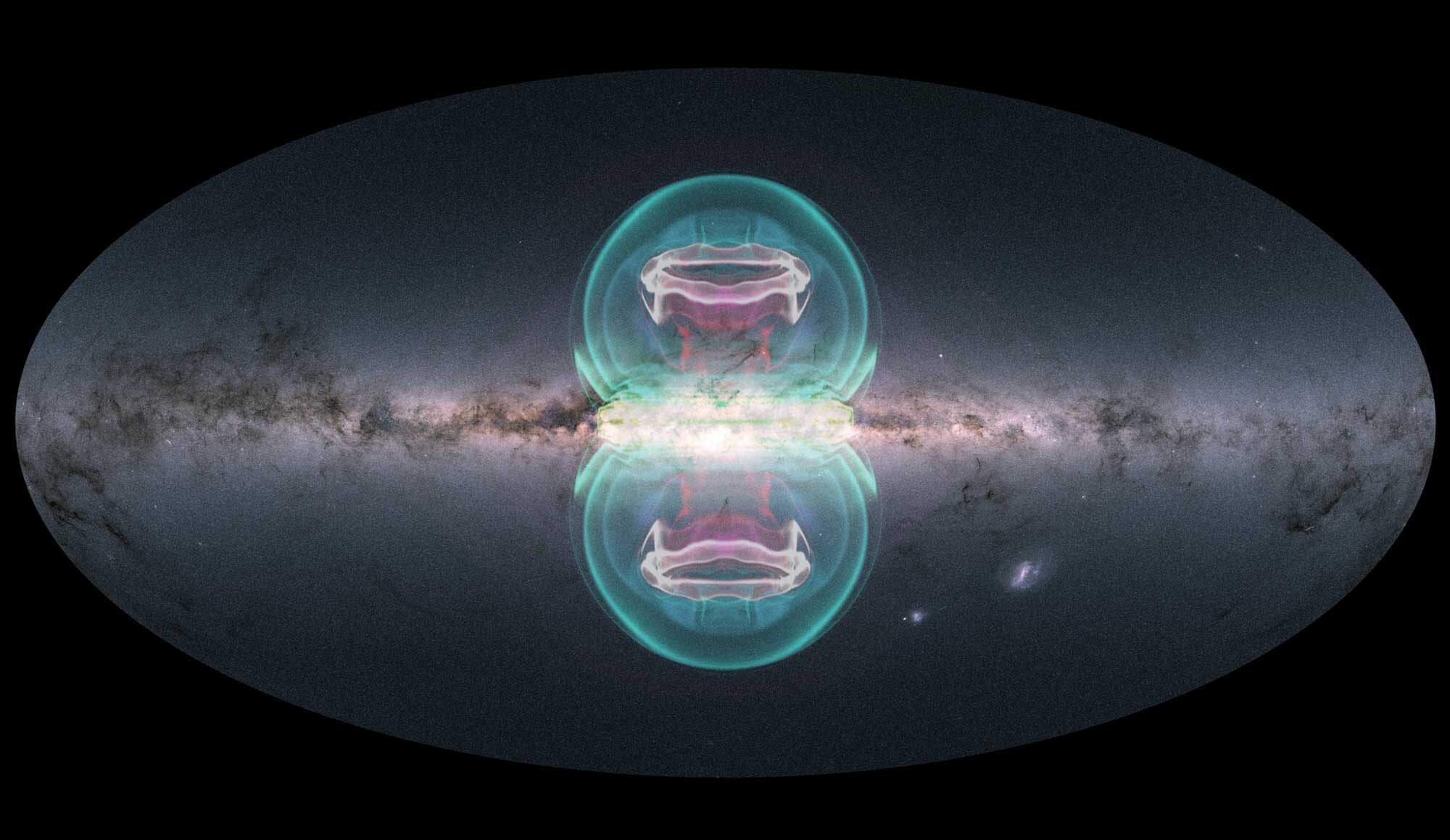Huge bubbles surrounding our Milky Way Galaxy were formed by the black hole at its heart, study says

The black hole at the heart of our galaxy has surrounded it in two vast bubbles, a study has found.
New research could help solve the mystery in why our Milky Way is wrapped in the vast bubbles, shedding light on a mystery that has perplexed astronomers.
In 2020, researchers took images of the two vast bubbles, using an X-ray telescope named eRosita. Sceintists have debated about how they could have been formed.
Some had suggested that the bubbles – named Fermi and eRosita, after the telescopes that spotted them – could have been created by a nuclear starburst. That sees a star explode into a supernova and then expel material.
But the new research suggests that they were made by a powerful jet that spewed out of the supermassive black hole at the middle of the galaxy.
The outflows happen when material falls towards the black hole, but doesn’t cross its event horizon – the point at which nothing can escape. Some of that material is then thrown back out into space, stopping the black holes from growing too quickly – and the energy causes chaos for the material around the black hole, leading to the formation of the bubbles.
The structures of the bubble are about 36,000 light years tall, or 11 kilo parsecs. That means they are more than a third as tall as the Milky Way measures in diameter.
That jet started throwing out material about 2.6 million years ago, and did so for about 100,000 years.
“Our findings are important in the sense that we need to understand how black holes interact with the galaxies that they are inside, because this interaction allows these black holes to grow in a controlled fashion as opposed to grow uncontrollably,” said University of Michigan astronomer Mateusz Ruszkowski, a co-author of the study.
“If you believe in the model of these Fermi or eRosita bubbles as being driven by supermassive black holes, you can start answering these profound questions.”
The bubbles are of particular interest because they are so nearby. Being so close means that astronomers can measure in detail exactly how much energy is being thrown out of the black hole, and other precise measurements of its size.
“We not only can rule out the starburst model, but we can also fine tune the parameters that are needed to produce the same images, or something very similar to what’s in the sky, within that supermassive black hole model,” Ruszkowski said.
“We can better constrain certain things, such as how much energy was pumped in, what’s inside these bubbles and how long was the energy injected in order to produce these bubbles.”
Join our commenting forum
Join thought-provoking conversations, follow other Independent readers and see their replies
Comments
Bookmark popover
Removed from bookmarks